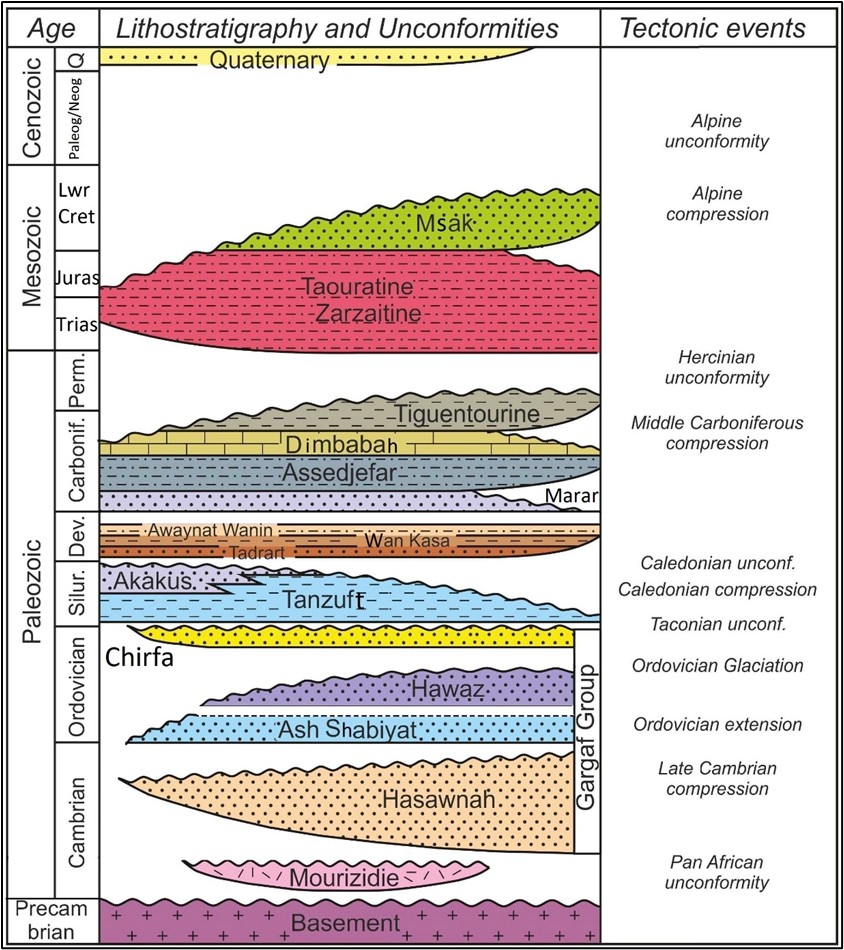Mourizidié Fm
Type Locality and Naming
Jacqué, 1963.
References: Jacqué, 1963; Fabre et al., 1983; Government of Niger, 1993; Mergl et al., 2000, 2001; Shalbak, 2015; Hallet, 2002, 2016.
Synonym: Mourizidie Fm; Equivalent(s): “Basal Unit” as per Government of Niger (1993);
Lithology and Thickness
Low-grade metamorphic to non-metamorphic rocks. Jacqué (1963) uses this term for a set of arkosic sandstones and predominantly wine-red siltstones. Thickness: ~10 m (Fabre et al., 1983).
[Figure 1: Stratigraphic chart for the sedimentary infill and the main tectonic events recorded in the southern Murzuq basin of Libya and adapted for the Djado Basin of Niger (Source: modified from Shalbak, 2015)]
Relationships and Distribution
Lower contact
Precambrian is below.
Upper contact
Overlain by the Hasawnah Fm (Gargaf Gr)
Regional extent
GeoJSON
Fossils
none
Age
Depositional setting
Continental
Additional Information
Jacqué (1963) interpreted this Formation as infra-Cambrian for the following reasons:
- It is placed in angular discordance on the folded Pharusian basement, partially granitized and covered by slightly discordant Cambrian-Ordovician sandstones (Gargaf Group).
- Some of its petrographic and lithological characters oppose it to Cambrian-Ordovician sandstones.
Although Jacqué did not see volcanic flows, the basic conglomerate of Cambrian-Ordovician sandstones that the formation supports contains rolled pebbles of devitrified rhyolites; these acid flows are known and dated as Cambrian in several regions of the Sahara.
Fabre et al. (1983, page 123) state that the “level 0” at the base of the Cambrian-Ordovician of the Djado Basin is “represented by fine to medium sandstone, well-sorted, often purple, which would be the equivalent of the Mourizidié formation in Libya. These sandstones, sometimes attached to the Upper Precambrian (Infracambrian), are rather to be compared to the purple sequence of the Ahaggar of Cambrian age which represents the molasse of the pan-African chain”.
